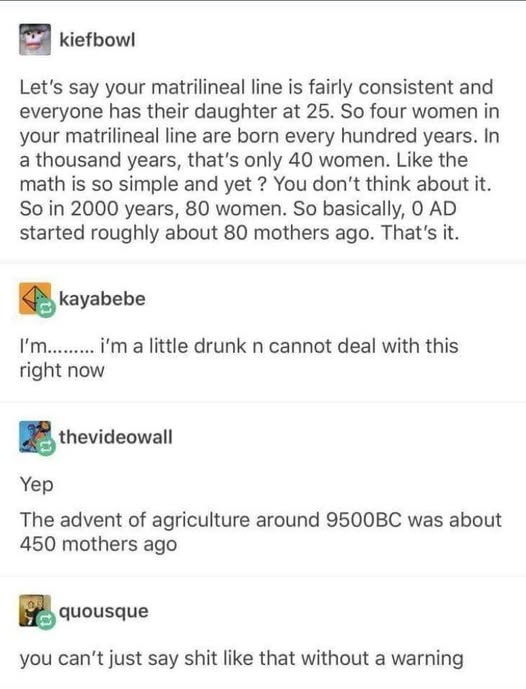this post was submitted on 23 Jan 2025
925 points (98.5% liked)
Science Memes
11745 readers
1190 users here now
Welcome to c/science_memes @ Mander.xyz!
A place for majestic STEMLORD peacocking, as well as memes about the realities of working in a lab.

Rules
- Don't throw mud. Behave like an intellectual and remember the human.
- Keep it rooted (on topic).
- No spam.
- Infographics welcome, get schooled.
This is a science community. We use the Dawkins definition of meme.
Research Committee
Other Mander Communities
Science and Research
Biology and Life Sciences
- [email protected]
- [email protected]
- [email protected]
- [email protected]
- [email protected]
- [email protected]
- [email protected]
- [email protected]
- [email protected]
- [email protected]
- [email protected]
- [email protected]
- [email protected]
- [email protected]
- [email protected]
- [email protected]
- [email protected]
- [email protected]
- [email protected]
- [email protected]
- [email protected]
- [email protected]
- [email protected]
- [email protected]
- !reptiles and [email protected]
Physical Sciences
- [email protected]
- [email protected]
- [email protected]
- [email protected]
- [email protected]
- [email protected]
- [email protected]
- [email protected]
- [email protected]
Humanities and Social Sciences
Practical and Applied Sciences
- !exercise-and [email protected]
- [email protected]
- !self [email protected]
- [email protected]
- [email protected]
- [email protected]
Memes
Miscellaneous
founded 2 years ago
MODERATORS
you are viewing a single comment's thread
view the rest of the comments
view the rest of the comments

High maternal mortality meant that having more than about 7 children per woman was rare. Total fertility rate was about 4.5 to 7 in the pre modern era. Population growth was low due to infant and early childhood mortality though.
If you start having children at age 12, you can have a child every year and reach 7 children by age 20. Without contraceptives, people weren’t having such large multi-year gaps between children like we do now.
Based on my own genealogical research, the trend I typically saw was 6-8 kids, between 18 and early 30s, about 20% of which died. Plus consider that some of those will be sons, and some daughters never become mothers, 25 is pretty spot on for the average age for a mother-to-mother generational gap.
Yes abd the field of genealogy, the size of a generation is given as 25 years. I believe specialists of genealogy who had to defined this metric did think about the way couple had kids in the past.